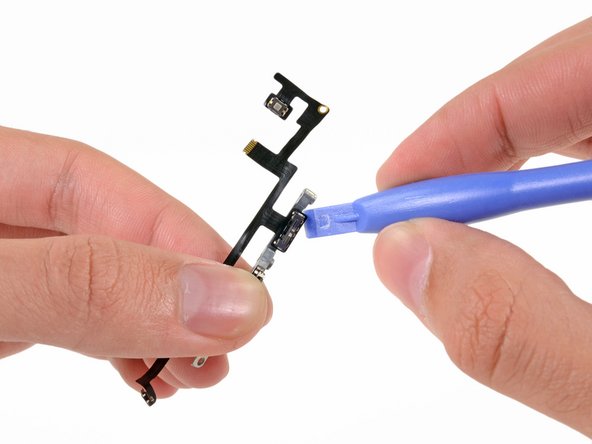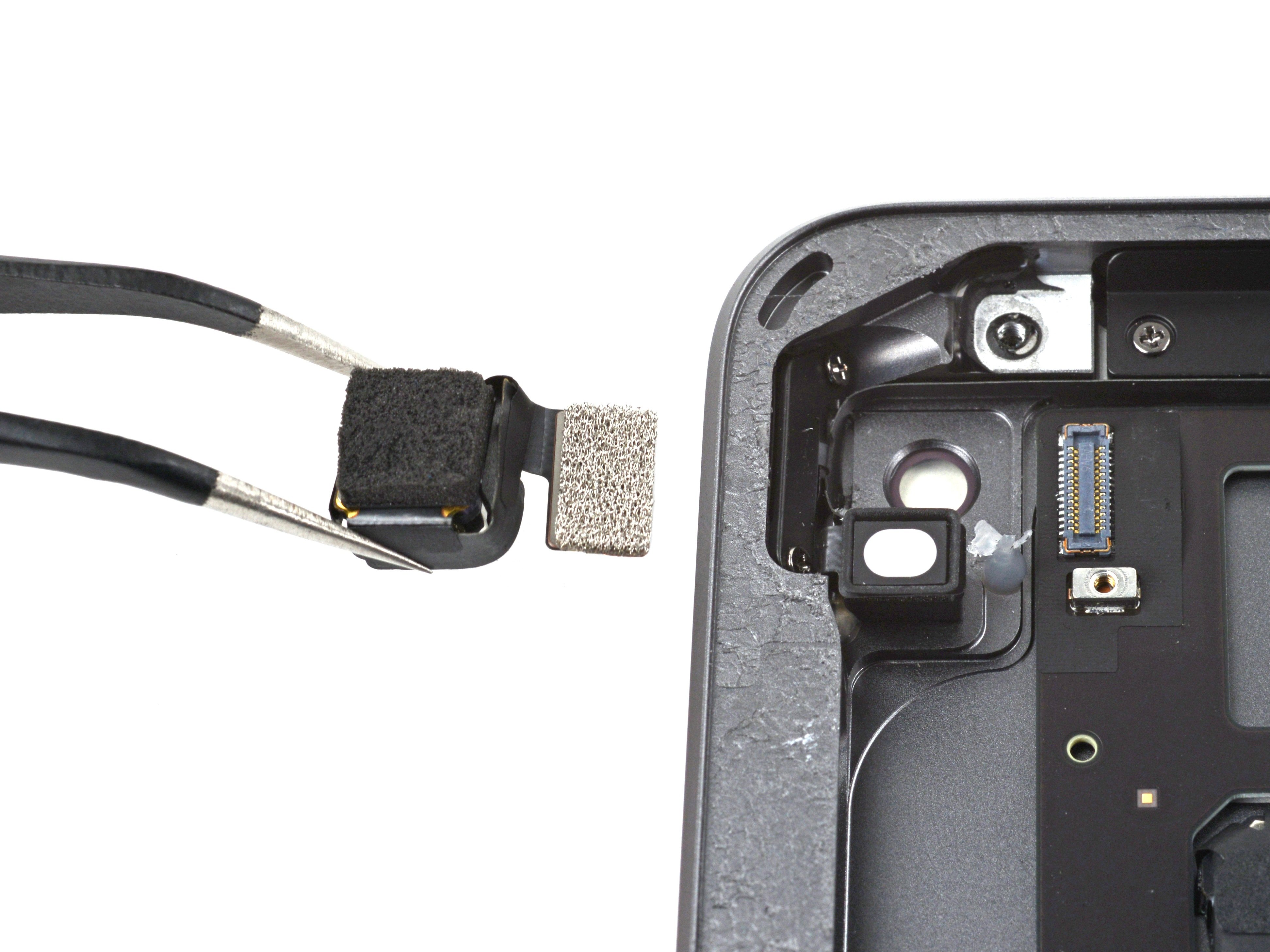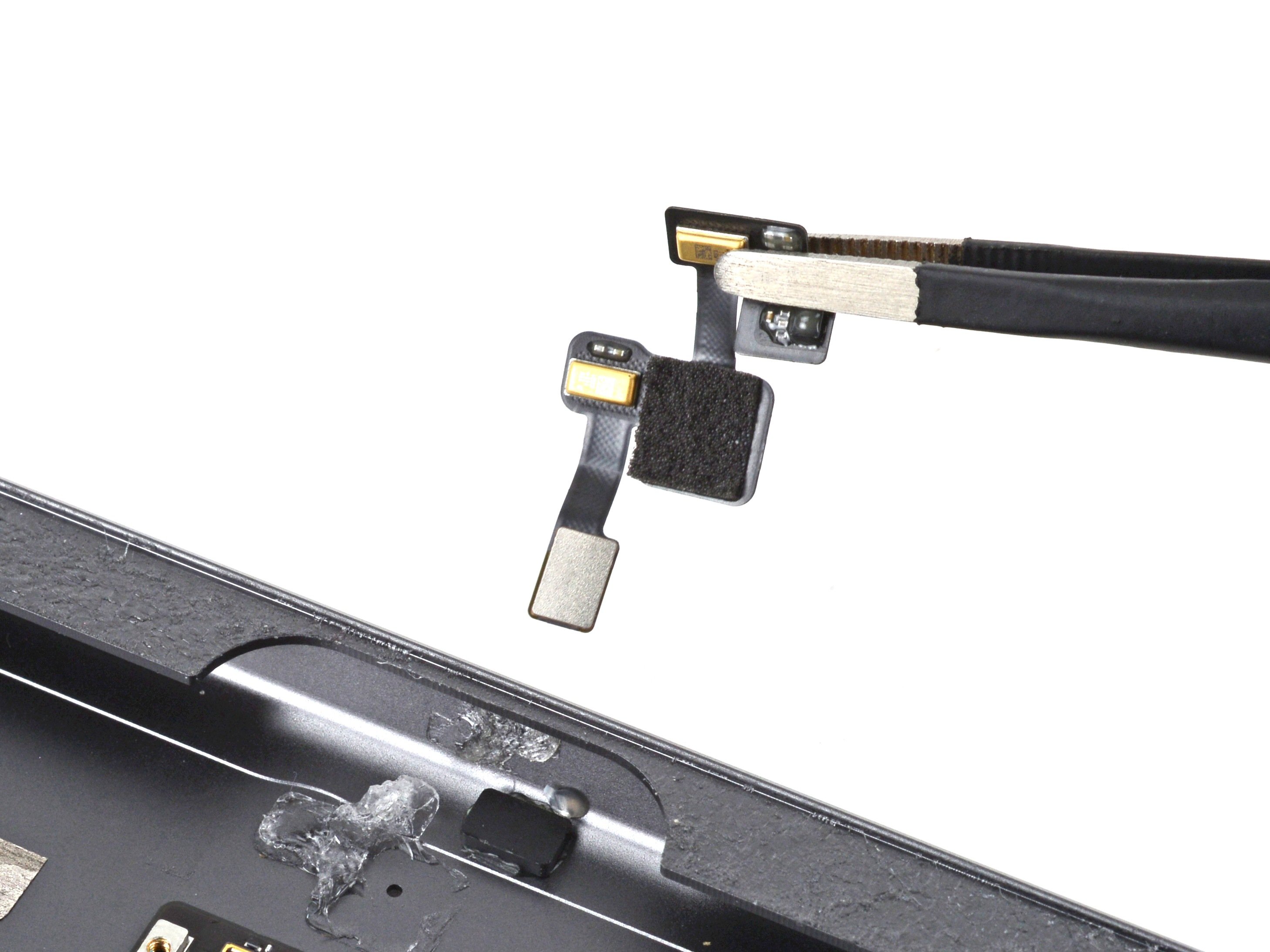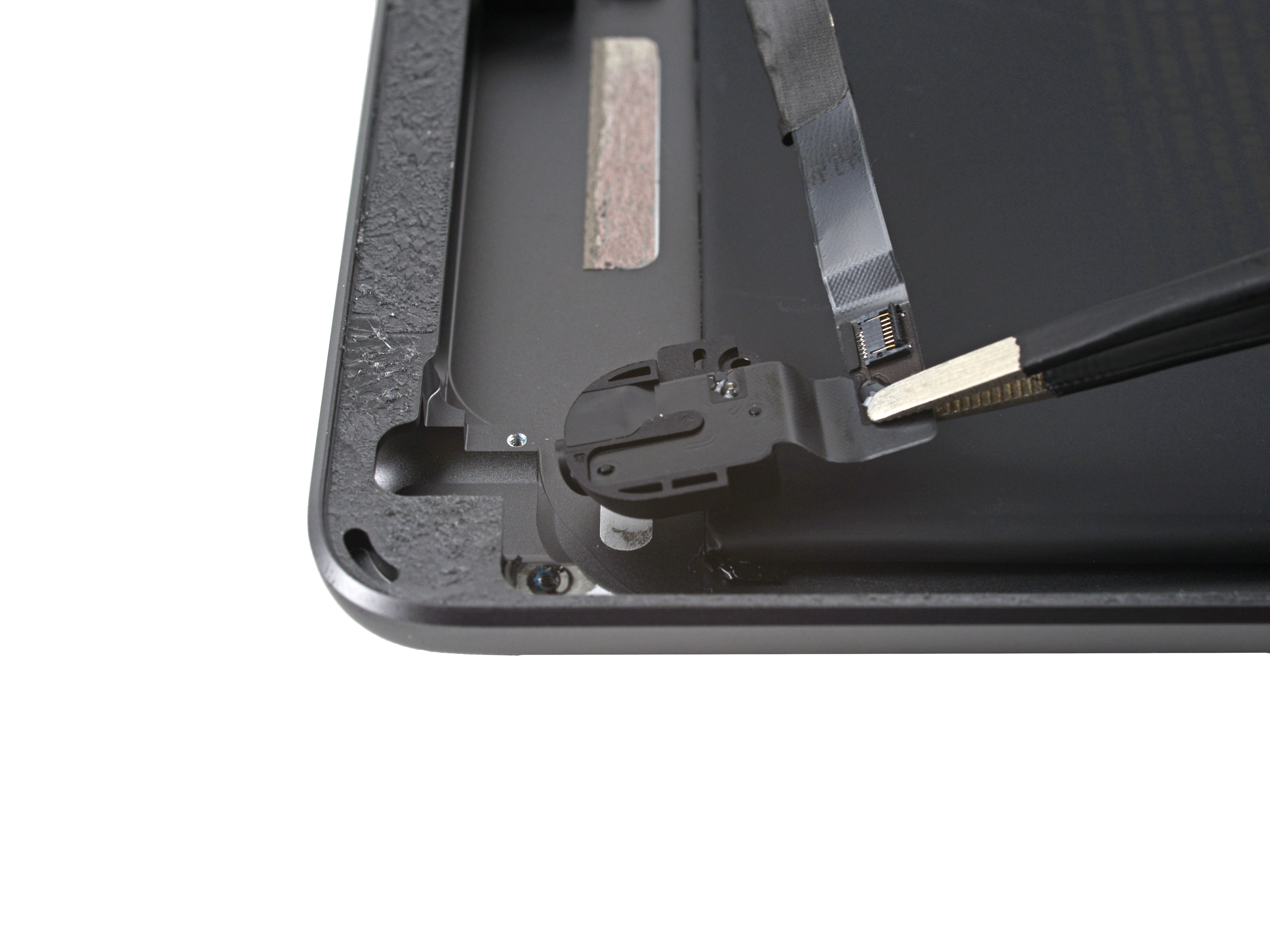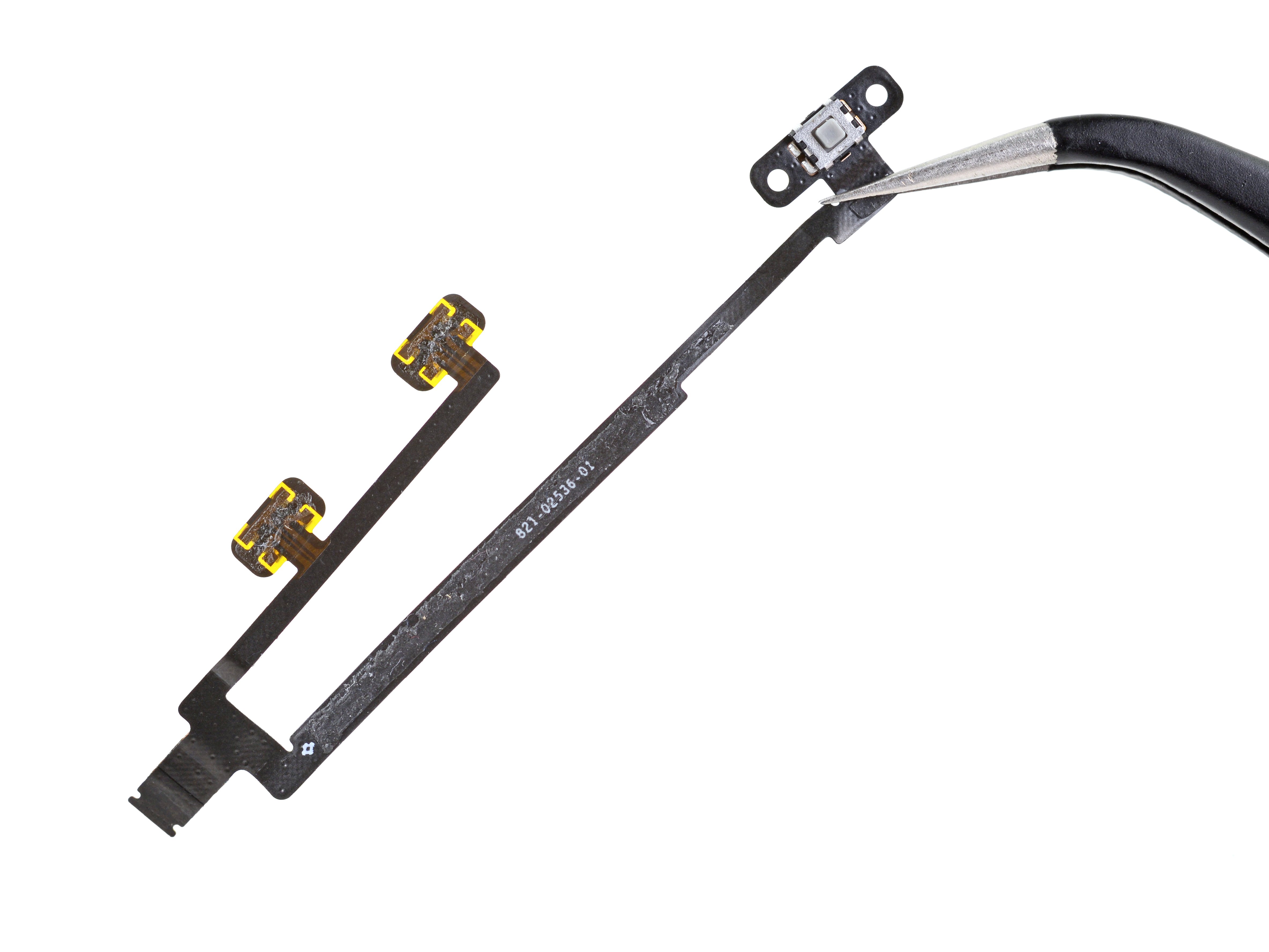DIY Guide to Replace Power and Volume Buttons on iPad CDMA
Duration: 45 minutes
Steps: 71 Steps
Hey there! Just a friendly reminder to take your time and be careful while working on your device. If you run into any bumps along the way, don’t hesitate to reach out for help. You can always schedule a repair if you need a hand!
Get ready to tackle the replacement of your power and volume buttons! Just a heads up, some of the images in this guide feature a Wi-Fi model, so the insides might look a tad different from your cellular version. No worries though—the steps are pretty much the same for both models, except where we point out any differences. If you need help, you can always schedule a repair.
Step 1
It’s a good idea to give your microwave a quick clean before diving in, as any leftover gunk might just hitch a ride on the iOpener.
– Pop the iOpener right in the middle of the microwave and let it warm up a bit.
Tools Used
Step 2
Hey there! Just a friendly reminder to keep an eye on that iOpener during your repair adventure. We don’t want it to get too hot and potentially burst, so let’s keep it below 100˚C (212˚F).
If your iOpener looks like it’s been hitting the gym and is a bit swollen, steer clear of touching it!
If the middle of your iOpener is still feeling a bit too toasty to handle, no worries! Just keep using it while it cools down a bit more before you heat it up again. Remember, a well-heated iOpener should stay cozy for about 10 minutes.
– Give that iOpener a cozy thirty-second spa treatment in the microwave.
– As you work through the repair, remember to keep your iOpener toasty by giving it a quick reheat in the microwave for another thirty seconds whenever it starts to cool down.
Tools Used
Step 3
Watch out! The iOpener is going to be super toasty, so handle it with care. If it feels a bit too hot to handle, grab an oven mitt for some extra protection.
– Carefully take the iOpener out of the microwave, gripping one of the flat ends to steer clear of that hot center. You’ve got this!
Tools Used
Step 4
No microwave? No problem! Just pop that iOpener into some boiling water to get it nice and warm.
– Grab a pot or pan and fill it up with enough water to give your iOpener a nice, cozy bath.
– Heat that water until it’s bubbling away, then turn off the heat. Safety first!
– Carefully place your iOpener into the hot water for about 2-3 minutes. Make sure it’s fully submerged and enjoying the warmth.
– Using tongs (because we’re all about safety), fish out the heated iOpener from its steamy spa.
– Give the iOpener a good towel dry—no one likes a soggy iOpener!
– And voilà! Your iOpener is all set for action! If it needs a little more heat, just repeat the process: boil the water, turn off the heat, and let it soak for another 2-3 minutes.
Tools Used
Step 5
– Grab a SIM eject tool or a straightened paperclip and gently pop out that SIM tray like a pro!
Step 6
– Carefully slide the SIM tray out of its cozy little spot and set it aside with a smile. You’ve got this!
– If you’re swapping out the SIM card, gently pop it out of the tray and place the new one in its happy new home.
Step 7
Pop on those safety glasses to keep your peepers protected, and watch out for that LCD screen – it’s more delicate than it looks!
– Got a cracked display glass? No worries! Let’s keep that breakage under control and stay safe while you tackle this repair by sticking some tape on it.
– Grab some clear packing tape and lay down overlapping strips over your iPad’s display until it’s completely covered. You’re doing great!
– Now, just follow the rest of the guide as best as you can. Keep in mind, once that glass starts breaking, it might keep cracking as you work. You might even need to use a metal prying tool to gently scoop the glass out. You’ve got this!
Step 8
Just a heads up! As you might be dealing with some delicate glass during this process, it’s a smart move to rock a pair of safety glasses. They’ll keep you safe from any surprise flying shards.
– Place the iOpener flat against the right edge of the iPad, making sure it’s snug and cozy for optimal contact between the iPad’s surface and the iOpener.
– Give it a little time to work its magic—let the bag chill on the iPad for about 90 seconds before you dive in to open the front panel.
Tools Used
Step 9
Getting that wedged tip of the opening tool between the glass and plastic might take a bit of elbow grease. Just take your time and be gentle! Wiggle the plastic opening tool back and forth as needed to make it happen. You’ve got this!
– Hey there! Notice that little gap in the iPad’s adhesive ring at the upper right corner? It’s about 2.0 inches (~5 cm) from the top. Let’s take advantage of that tiny weakness!
– Now, line up your tool with the mute button. Gently slide the tip of a plastic opening tool into that gap between the front glass and the plastic bezel. Just get the very tip in there, enough to give that crack a little nudge.
Step 11
– With the plastic opening tool snugly positioned between the front glass and the plastic bezel, gently slide a plastic opening pick into the gap right next to it. You’re doing great—keep it up!
Step 12
– Gently take out the plastic opening tool from your iPad, and slide the opening pick a little deeper under the front glass, about half an inch down. You’re doing great!
Step 14
The adhesive is super strong, so you might need to put in some elbow grease. Just take your time and be gentle with it!
If you spot the tip of the opening pick peeking out from under the front glass, gently pull it out a smidge. While it’s safe to have the pick this deep, it might leave some adhesive goo on the LCD. Just a heads up!
– As the iOpener warms up the bottom edge, let’s get started on freeing the adhesive from the right edge of your iPad.
– Gently slide the opening pick down the edge of the iPad, releasing that adhesive like a pro!
Tools Used
Step 15
As you peel away the adhesive, you might find it handy to shift the warmed iOpener back to the right edge of the iPad. This little maneuver depends on how long the iPad has been cooling while you’ve been busy working your magic.
– If your opening pick is feeling a bit clingy and stuck in the adhesive, just give it a little ‘roll’ along the edge of the iPad to keep loosening that sticky stuff. You’re doing great!
Tools Used
Step 16
– Before you dive in and pop that first opening pick from the bottom corner of your iPad, slide a second pick under the right edge of the front glass. This little buddy will help keep the adhesive from getting all clingy again.
– Give your iOpener a little reheat love, then place it at the top edge of the iPad. You’re doing great!
Tools Used
Step 17
The Wi-Fi antenna is snugly attached to the bottom right edge of the rear case of your iPad with screws and a cable. Given the unique position of the Wi-Fi antenna, it’s super important to handle this part with care to avoid any accidental damage. Let’s keep that antenna happy and functioning!
– Alright, folks, it’s time to bring out your inner repair ninja! The next few steps are all about being super careful.
– You’ll need to gently free the adhesive holding the antenna to the front panel—just remember to treat those delicate parts connecting the antenna to the iPad’s bottom with the utmost respect. Follow along closely, and you’ll do great!
Step 18
Hey there! Just a friendly reminder: don’t slide that pick past the bottom right corner. You might accidentally give the Wi-Fi antenna a little too much love, and we wouldn’t want that!
– Gently glide the opening pick around the bottom right corner of the iPad to free up that pesky adhesive. You’ve got this!
Step 19
As you glide the opening pick along the bottom right edge of the front panel, keep an eye out! The Wi-Fi antenna is lurking close to the corner, and if the adhesive gets a little too friendly, it might just get severed. So, take it easy and be gentle with that pick!
Just gently wiggle the pick out from under the front glass—no need to yank it out completely! Keep about 1/8″ (3 mm) of the tip snugly tucked under there for best results.
– Gently glide the tip of the opening pick along the bottom edge of the iPad to free the adhesive holding the Wi-Fi antenna in place. You’re doing great!
Step 20
– Now that you’ve gracefully navigated past the Wi-Fi antenna (about 3″ or 75 mm from the right edge, right by the home button), it’s time to reinsert that opening pick all the way in.
– Give the pick a little slide to the right to break free the adhesive that’s been keeping the Wi-Fi antenna cozy with the front glass.
Step 21
Keep that iOpener cool, my friend! Heat it for no more than a minute at a time, and give it a breather of at least two minutes before warming it up again. Safety first, and you’ll be golden!
If the adhesive has cooled down a bit too much along the bottom edge, just give the iOpener a quick reheat to cozy up that sticky stuff where you’re working.
– Keep on gently peeling away the adhesive at the bottom of the iPad. Make sure to pull the opening pick out far enough to navigate around the home button. Once you’re past the home button, reinsert the pick to a depth of about 1/2 inch (10 mm). You’re doing great!
Tools Used
Step 22
– Keep going and peel back that adhesive all the way along the bottom edge of the iPad. You’re doing great!
– Once you’re there, tuck that opening pick right under the front glass near the home button. It’s like giving your iPad a little hug!
Step 24
If the adhesive has cooled down a bit too much, just swap out the iOpener for a fresh one along the top edge and keep going strong. If your iOpener is feeling a little chilly, give it a warm-up and get back to work!
– Gently glide the opening pick along the top edge of your iPad, giving it a little tug to navigate around the front-facing camera bracket.
– The adhesive in this area is pretty strong, so you might need to apply some muscle. Take your time and be cautious to avoid any slips that could harm you or your iPad.
– If the opening pick seems to be stuck in the adhesive, try ‘rolling’ the pick as demonstrated in step 9.
Tools Used
Step 25
If the adhesive is feeling nice and toasty, go ahead and take the iOpener off the iPad for a bit of ease. But if it’s still holding on tight, just give the iOpener another warm-up and place it on the left edge while you get to work.
– Keep peeling away the adhesive at the top edge of the iPad, and gently maneuver the opening pick around the top left corner.
Tools Used
Step 26
The digitizer cable is hanging out about 2 inches (50 mm) up from the bottom of your iPad. When you’re sliding that pick, hit the brakes when you reach around 2.25 inches (60 mm) from the bottom. You’ve got this!
– Gently glide that opening pick along the left edge of your iPad, peeling away the adhesive as you go. Don’t worry, the adhesive is pretty slim here thanks to the digitizer running along the entire left side. Just remember to keep the pick at a safe depth—no deeper than about half an inch (10 mm)—to avoid any mishaps with the digitizer. You’ve got this!
Step 27
Be super careful! The bottom of the digitizer cable is just about 1″ (25 mm) from the bottom of the iPad. Take your time and work gently to avoid cutting this cable. You’ve got this!
– Grab that trusty opening pick you’ve got tucked under the bottom edge of your iPad and let’s work some magic! Gently release the adhesive at the bottom left corner and watch the magic happen.
Step 28
It looks like some of the adhesive around the edge of your iPad might have decided to stick around a bit longer than expected. No worries! Just slide a pick under the edge where the front glass is still holding on tight and gently ‘cut’ through that adhesive. You’ve got this! If you need help, you can always schedule a repair.
– Take one of those nifty opening picks and gently lift the bottom right corner of your iPad. Grab hold of it with your fingers and you’re on your way!
Step 29
Watch out for any sticky stuff still lingering around! Grab an opening pick and gently slice through any adhesive that might be keeping the front panel snugly in place.
– Grab your iPad by the top and bottom right corners, and gently twist the front glass away from the device. You’ve got this!
– When putting everything back together, take a moment to use a microfiber cloth and some compressed air to wipe away any dust or fingerprints from the LCD before you reinstall the glass. A clean screen is a happy screen!
Step 30
The screw in the bottom left corner is hiding behind the home button ribbon cable connector. Gently nudge that cable out of the way so you can easily access and remove the bottom left screw.
– Unscrew those four 2 mm Phillips #00 screws that are holding the LCD snugly to the aluminum frame. You’ve got this!
Step 31
Handle the LCD with care! That ribbon cable is a bit delicate and could snap if you bend it too much. Keep it safe and sound!
– Grab your trusty plastic opening tool or spudger and gently lift the right edge of the LCD out of the iPad. You’ve got this!
– Now, give that LCD a little rotation along its left edge and lay it down softly on top of the front glass panel. Easy peasy!
Tools Used
Step 32
– Grab your trusty spudger and gently lift the tape that’s holding the LCD ribbon cable connector in place. You’re doing great!
Tools Used
Step 33
– Gently lift the retaining flap on the LCD ribbon cable ZIF connector. You’ve got this!
– With a little finesse, use your fingers or tweezers to carefully pull the LCD ribbon cable out of its socket on the logic board. Easy peasy!
– If the LCD screen is playing hard to get and doesn’t light up after reconnecting the ZIF connector, just give your iPad a little nudge by holding down the power button and home button for at least ten seconds until the Apple logo makes its grand appearance. You’re almost there!
Tools Used
Step 34
– Gently lift the LCD away from the front panel without making contact with the screen. You’ve got this!
Step 35
If you see any electrical tape hanging out, go ahead and peel it off to free the Wi-Fi antenna, speaker cable, and home button ribbon cable. You’ve got this!
Step 36
– Lift the retaining flap on the home button ribbon cable ZIF connector with a gentle touch.
Step 37
– Grab a trusty pair of tweezers and gently wiggle that home button ribbon cable out of its cozy spot on the logic board. You’ve got this!
Tools Used
Step 39
– With the spudger’s tip, gently lift the tape holding the digitizer ribbon cable to the logic board. You’re doing great!
Tools Used
Step 40
– Gently lift the retaining flap on both of the digitizer ribbon cable ZIF connectors. Let’s get those connections ready for action!
Step 41
– Grab your trusty spudger and gently slide the flat end underneath the digitizer ribbon cable to break that adhesive seal. You’ve got this!
– Now, with a steady hand, pull the digitizer ribbon cable straight out of its cozy sockets on the logic board. Easy peasy!
Tools Used
Step 42
– Gently lift the digitizer ribbon cable and grab your trusty spudger. Use the flat end to carefully break the adhesive bond holding the cable to the rear aluminum case. You’ve got this!
Tools Used
Step 43
– With a gentle touch, coax the digitizer ribbon cable out of its cozy spot in the aluminum frame.
– Carefully lift the front panel away from the iPad, like peeling a banana—smooth and steady!
Step 44
– Gently peel back that piece of electrical tape hiding the headphone jack assembly cable connector. It’s like unwrapping a little surprise!
– Now, grab your trusty spudger and use its tip to flip up the retaining flap on both ZIF connectors that are holding the headphone jack cable to the logic board. You’re doing great!
Tools Used
Step 45
– Gently slide the flat end of a spudger beneath the headphone jack assembly cable, freeing it from the adhesive that’s been keeping it cozy against the rear aluminum frame.
– Carefully pull the headphone jack assembly cable straight out of its cozy spot on the logic board.
Tools Used
Step 46
– Gently peel away that pesky tape hiding the SIM board cable ZIF connector.
– Flip up the little retaining flap on the SIM board cable ZIF connector like a pro.
– With the tip of your trusty spudger, carefully pull the SIM board cable straight out of its cozy socket on the logic board.
Tools Used
Step 47
– Unscrew those three 1.75 mm Phillips #00 screws holding the SIM board snugly against the aluminum frame. You’ve got this!
Step 48
As you gently maneuver the headphone jack assembly cable, remember to take it easy on the headphone jack itself—too much tugging might just send it packing!
– Gently set the headphone jack assembly cable aside and pop the SIM board out of the iPad. You’re doing great!
Step 49
– Gently peel away the adhesive tape that’s snugly holding the headphone jack assembly in place. You’ve got this!
Step 50
– Unscrew the lone 2.6 mm Phillips #0 screw that’s holding the camera cable snugly to the headphone jack assembly. You’ve got this!
Step 51
– Grab that trusty spudger and gently nudge the front-facing camera out of its cozy home on the headphone jack assembly.
– Now, while keeping your spudger in place, give it a little slide to the right to free the adhesive that’s holding the camera cable snugly in place.
Tools Used
Step 52
– Grab your trusty spudger and gently lift the retaining flap on the microphone cable ZIF connector. You’ve got this!
– Now, slide the tip of the spudger under the microphone ribbon cable and ease it out of its ZIF connector. Easy does it!
– Give that spudger a little shimmy to the left to break the adhesive that’s keeping the microphone ribbon cable stuck to the headphone jack assembly. Almost there!
Tools Used
Step 53
– Gently use the flat end of the spudger to lift the antenna connector cable out of its cozy little home on the headphone jack assembly board. You’ve got this!
Tools Used
Step 54
– Gently lift the retaining flap that holds the volume/power button ribbon cable connector snugly against the headphone jack assembly board.
– Carefully detach the volume button ribbon cable from its ZIF connector.
Step 56
– Grasp the ribbon cable of the headphone jack assembly and gently slide the assembly parallel to the iPad, pulling it towards the bottom of the device. Remember, you’re doing great!
Step 57
– With both hands, gently grip the headphone jack assembly and carefully pull it away from the iPad, keeping an eye out for any cables that might get snagged along the way.
Step 58
The two screws at the top are playfully nestled into the aluminum frame. Just remember to keep that screwdriver aligned with the screw, and you’ll be golden!
– Unscrew the screws holding the power & volume button cable to the aluminum frame. You’ve got this!
Step 60
– Let’s get started! First, carefully take out that single 2.6 mm Phillips #00 screw that’s keeping the volume button frame snug against the aluminum frame. You’ve got this!
Step 61
– Gently slide the edge of a plastic opening tool under the sleep/wake sensor, taking care not to harm that delicate cable.
– Carefully maneuver the plastic opening tool around the sensor to free it from the adhesive.
Step 63
– With the pointy end of the spudger in hand, gently peel back the adhesive lurking beneath the volume button section of the ribbon cable. You’ve got this!
Tools Used
Step 65
– With the spudger tip nestled under the ribbon cable, gently coax the power button out of its cozy home in the aluminum frame.
Tools Used
Step 66
– With both hands on the power & volume button cable, gently coax the volume buttons and lock switch out of their cozy spots in the aluminum frame.
– Now, lift and gracefully extract the power & volume button cable from the rear aluminum case.
Step 67
– Gently slide the tip of your trusty plastic opening tool under the top edge of the power button.
– Carefully lift the top side of the power button away from its cozy bracket.
Step 68
– Don’t forget to give some love to the underside of the power button just like you did before!
– Now, gently lift and take out the power button bracket from the power & volume button assembly. You’re doing great!
Step 69
– Gently slide the tip of your trusty plastic opening tool under the top side of the rotation lock/mute switch.
– Now, give that plastic tool a little downward slide to pop the topside of the rotation lock/mute switch free from its cozy bracket.
Step 70
– Slide the tip of your trusty plastic opening tool under the top volume rocker and gently nudge it upwards to pop it free from the volume buttons bracket.
– Do the same magic for the bottom volume rocker, giving it a little lift to release it from the volume buttons bracket.
Step 71
– Gently lift and detach the ribbon cable for the power and volume buttons. You’re doing great!











































































































































